- europages
- >
- COMPANIES - SUPPLIERS - SERVICE PROVIDERS
- >
- organizer
Results for
Organizer - Import export

TER CHEMICALS DISTRIBUTION GROUP
Germany
We offer fruit acids In guaranteed quality, at stable prices and packed appropriately for transportation. Do you need advice on choosing your product or are you looking for a suitable substitution? Our application and product experts are happy to help! Our experience and deep knowledge in the area of specialty chemicals and ingredients ensures that we are well positioned to effectively support both our customers and our suppliers with product and application expertise. Please contact us for more information!
Request for a quote
VEHGRO B.V
Germany
"What exactly is Turmeric? Turmeric is a plant of the South and Southeast Asian genus of the ginger family. The Turmeric or curcuma longa is made from the root of the plant. As a spice, Turmeric has a mildly bitter taste and is high on the superfoods list. This is partly due to the fact that Turmeric contains an essential oil that consists mainly of so-called 'sesquiterpenes'. The different types of 'sesquiterpenes' have numerous positive effects on our bodies."
Request for a quote
VEHGRO B.V
Germany
"Lemon juice Organic Lemon juice is made from 100% organically grown lemons from the lemon tree (citrus limonum). The lemon originates from Asia, but is nowadays common around the Mediterranean and America. After harvesting the lemon, the juice is squeezed out of the lemon. Our lemon juice comes from Italy where it is cooled and bottled after harvesting. Lemon juice is delicious in smoothies, yoghurts and juices. Lemon juice is also often used as a cleaning agent and can be used for various health purposes. Organic lemon juice in glass 1 litre bottles."
Request for a quote
VEHGRO B.V
Germany
"Beetroot (Beta vulgaris) Beetroot Powder Premium Organic from VehGro is a widely appreciated power food. This is because this red coloured powder is full of minerals, vitamins and many more good nutrients. This can contribute to your well-being. Discover it for yourself and order your own Beetroot Powder ah Premium Organic at VehGro today."
Request for a quote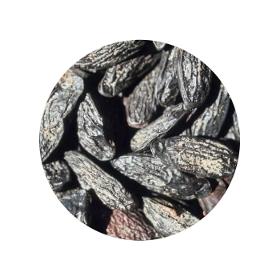
VEHGRO B.V
Germany
"Tonka beans (Dipteryx odorata) Tonkabones grow on a Tonka tree and are the seeds of the fruit that these trees carry. Tonka beans are narrow, black, elongated and wrinkled beans with a brown interior. Once harvested, the seeds are dried and soaked 24 hours a day in alcohol or rum. Tonka beans soaked in rum give a taste of vanilla, almond and rum. This makes them a perfect seasoning for desserts and pastries. After the addition of alcohol, the beans are dried again and a fermentation process takes place. Tonkabones are a widely used ingredient in desserts, the garnishing of desserts (ganache), caramel confectionery, ice cream or patisserie."
Request for a quoteDo you sell or make similar products?
Sign up to europages and have your products listed
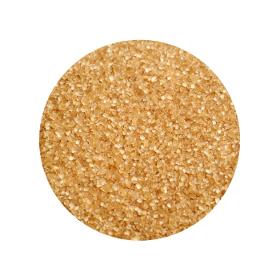
VEHGRO B.V
Germany
"Cane sugar Cane sugar is produced by boiling the juice of the sugar cane until a solid substance remains. This is also called crystallisation. After that, unevenness is sieved out and cane sugar remains. During the process, a small part of molasses is added, which explains the beige, cream colour. This organic raw cane sugar has a slightly malty pleasant sweetness. It can be used in all sorts of ways for which normal sugar is also used."
Request for a quote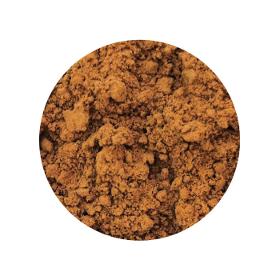
VEHGRO B.V
Germany
"7 Mushrooms mix Organic Our ultimate immune system booster consists of these 7 mushroom powders: Reishi The Reishi contains antioxidants, trace elements, polysaccharides, vitamins and the minerals selenium, boron and germamium. Chaga Chaga is full of antioxidants and various sterols. Sterols are plant steroids that balance the immune system. Shiitake Shiitake is full of vitamins, potassium and magnesium and contains 13 g of protein per 100 g. Maitake Maitake is rich in amino acids and contains the anitoxidant L-ergothionein, which supports the liver. Lion's mane The Lion's mane (Hericium erinaceus) supports the immune system and has a positive effect on the ability to concentrate. Cordyceps Cordyceps strengthens the immune system and slows it down when overactive. Snow Fungus The Snow Fungus contains more vitamin D than any other food source and is rich in antioxidants."
Request for a quote
VEHGRO B.V
Germany
"History and Origin Lucuma has been called the 'gold of the Incas'. Lucuma has been cultivated in the Peruvian highlands since 200 AD, when people discovered the caramel-sweet fruit. In Peru, 26 villages are named after this beloved fruit. The lucuma tree grows best at an altitude between 450 and 1000 metres. The tree can withstand drought well, but cannot withstand frost. High humidity is needed to produce the fruit. Lucuma trees only start producing fruit after 5 years and each tree produces up to 500 fruits per year. The fruits are yellow-brown in colour and can weigh up to one kilo each. Processing into Lucuma powder The lucuma tree bears fruit throughout the year, but the main harvest takes place in spring between January and April. When the fruit falls from the lucuma tree it is not yet ripe and the pulp is too hard to be edible. The fruit must be stored under hay until the bitter white latex breaks down and the pulp softens, but even when the fru…"
Request for a quote
VEHGRO B.V
Germany
"History and Origins Cacao (Theobroma) was first harvested by the Olmecs in Mexico as early as 1000 B.C. At that time it was mainly used for fortifying drinks. Over the years, the Mayas and the Aztecs adopted this use in their cultures. Cocoa became part of ceremonial rituals and cocoa beans were a means of payment. In the 16th century, the Spanish brought cocoa to Europe. In the mid-17th century, it became a popular drink. Cocoa trees were introduced to Asia and West Africa through colonies of various European countries, as there was a rising demand for chocolate in Europe. The cocoa bean is the raw material used in the production of chocolate. These cocoa beans originate from the tropical climates of South America (Ecuador). The Theobroma cacao tree is sacred to the Mayans and Aztecs. The cacao beans from the tree are harvested by hand and the raw beans are then cleaned in natural water and selected for the best quality. This process ensures that the nutritio…"
Request for a quote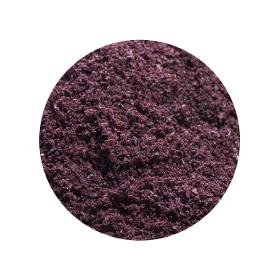
VEHGRO B.V
Germany
"Acai: A surprising Amazon fruit Acai is a surprising purple berry that comes from the rainforests of South America - more accurately, the 'Amazon'. Acai is now also available as acai berry powder. It is a superfood that is worthy of its name. Internationally, acai is known as an external anti-aging remedy. Acai is all about antioxidants. Antioxidants are known for bringing free radicals into line. It is these free radicals that do damage to cells and tissue, causing accelerated external aging. Acai contains more antioxidants than any other fruit or vegetable. Why buy acai powder? Acai is a miracle berry and superfood in countless ways. Acai powder is not only very tasty, but also full of healthy substances. The 'forbidden' fruit does not give eternal life, but it is permanently tasty and permanently healthy. Acai is fruit with an exotic twist: fruit that you will not find in most supermarkets. In short: acai is the way to be original and health…"
Request for a quote
VEHGRO B.V
Germany
"History and Origins Cacao (Theobroma) was first harvested by the Olmecs in Mexico as early as 1000 B.C. At that time it was mainly used for fortifying drinks. Over the years, the Mayas and the Aztecs adopted this use in their cultures. Cocoa became part of ceremonial rituals and cocoa beans were a means of payment. In the 16th century, the Spanish brought cocoa to Europe. In the mid-17th century, it became a popular drink. Cocoa trees were introduced to Asia and West Africa through colonies of various European countries, as there was a rising demand for chocolate in Europe. The cocoa bean is the raw material used in the production of chocolate. These cocoa beans originate from the tropical climates of South America (Ecuador). The Theobroma cacao tree is sacred to the Mayans and Aztecs. The cacao beans from the tree are harvested by hand and the raw beans are then cleaned in natural water and selected for the best quality. This process ensures that the nutritio…"
Request for a quote
VEHGRO B.V
Germany
"Origin Cocoa Powder Regular Organic Cocoa powder comes from the cocoa bean, the fruit of the cocoa tree. The cocoa tree grows in countries around the equator and produces cocoa beans from which, among other things, chocolate is made. To make cocoa powder, cocoa mass from the cocoa bean is used. The mass is pressed under high pressure to produce cocoa powder. Cocoa beans contain more antioxidants than red wine and 3 times more than green tea; cocoa beans are a rich source of minerals. The pods are hand-harvested and selected for the best quality. Our cocoa is also fermented to reduce their initial bitterness. The manufacturing process preserves a significant part of the nutritional value of the beans, without any additives. Forastero Beans Caocoa Powder Regular Organic comes from the Forastero cocoa tree. Originally this cocoa comes from the Amazon, but now it mainly grows in West Africa. There are 30 to 40 caco beans per pod on this tree. This cocoa involves…"
Request for a quote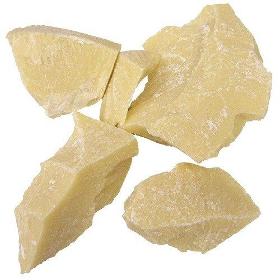
VEHGRO B.V
Germany
"History and Origins Cacao (Theobroma) was first harvested by the Olmecs in Mexico as early as 1000 B.C. At that time it was mainly used for fortifying drinks. Over the years, the Mayas and the Aztecs adopted this use in their cultures. Cocoa became part of ceremonial rituals and cocoa beans were a means of payment. In the 16th century, the Spanish brought cocoa to Europe. In the mid-17th century, it became a popular drink. Cocoa trees were introduced to Asia and West Africa through colonies of various European countries, as there was a rising demand for chocolate in Europe. The cocoa bean is the raw material used in the production of chocolate. These cocoa beans originate from the tropical climates of South America (Ecuador). The Theobroma cacao tree is sacred to the Mayans and Aztecs. The cacao beans from the tree are harvested by hand and the raw beans are then cleaned in natural water and selected for the best quality. This process ensures that the nutritio…"
Request for a quote
VEHGRO B.V
Germany
"History and Origins Cacao (Theobroma) was first harvested by the Olmecs in Mexico as early as 1000 B.C. At that time it was mainly used for fortifying drinks. Over the years, the Mayas and the Aztecs adopted this use in their cultures. Cocoa became part of ceremonial rituals and cocoa beans were a means of payment. In the 16th century, the Spanish brought cocoa to Europe. In the mid-17th century, it became a popular drink. Cocoa trees were introduced to Asia and West Africa through colonies of various European countries, as there was a rising demand for chocolate in Europe. The cocoa bean is the raw material used in the production of chocolate. These cocoa beans originate from the tropical climates of South America (Ecuador). The Theobroma cacao tree is sacred to the Mayans and Aztecs. The cacao beans from the tree are harvested by hand and the raw beans are then cleaned in natural water and selected for the best quality. This process ensures that the nutritio…"
Request for a quote
VEHGRO B.V
Germany
"Origin and history of the Shiitake The shiitake (Lentinula edodes) is an edible mushroom, which occurs naturally in Japan, China and Korea. Here the mushroom is grown for centuries and appreciated for its taste and smell. In Asian cuisine, it is a commonly used mushroom. The shiitake grows on hard woods such as beech, oak, walnut and chestnut. The shiitake has a light brown to dark brown cap and belongs next to the mushroom to the most cultivated mushrooms in the world. Processing to Shiitake Mushroom Powder The shiitake is harvested when it has grown well, but the cap edge is still slightly curled down. The cap should already be loose from the stem, otherwise the shiitake is still too young. If the cap is too wide outwards, the shiitake is already too old. After harvesting, the mushroom is cut into pieces and put in the oven to dry. Then it is processed into a fine shiitake mushroom powder. Healthy properties of Shiitake The shiitake contains …"
Request for a quote
VEHGRO B.V
Germany
"Characteristics of the Turkey Tail Mushroom The turkey tail (Trametes versicolor) is a mushroom and it is a very common annual saprophyte (feeds on dead wood) on stumps and branches of deciduous trees. In addition, it can sometimes be found on fir trees. It grows in groups and has a white edge with different coloured zones: reddish brown, grey, blackish, white and beige. The sturdy, fan-shaped hats of the elfin scrub are 3-8 cm in size and usually no thicker than 2 mm. Processing to Turkey Tail Mushroom Powder The turkey tail is a mushroom that grows throughout the year. When harvesting, the turkey tails are picked in various forests. After harvesting, the turkey tail is cut into pieces and left to dry in the oven. After this process, it is processed into a fine turkey tail mushroom powder. Healthy properties of Turkey Tail Mushroom Powder Mushrooms are generally full of fiber, vitamins, protein and minerals. In addition, they contain a lot of …"
Request for a quote
VEHGRO B.V
Germany
"Agave cactus Agave is a plant that resembles a cactus and grows in large quantities in Mexico. The plant has a long history as a medicinal plant and as a sweetener. In addition, its juice is used to make tequila. What is Inulin? Inulin is a soluble fiber commonly found in various vegetables. Inulin has a peculiar but postive effect on our immune system. Because inulin cannot be broken down by our own bodies, we are dependent on a group of bacteria in the large intestine which have the necessary enzyme to do so. Ingesting inulin stimulates the growth of this group of intestinal bacteria. And that is precisely what is strange. Inulin makes intestinal bacteria grow, but in doing so increases your resistance to other groups of bacteria. This is because a number of organic acids are produced during the growth of intestinal bacteria and these make it more difficult for 'bad' bacteria and germs to survive. Because inulin thus stimulates the so-called bifidoflora, o…"
Request for a quoteResults for
Organizer - Import exportNumber of results
283 ProductsCountries
Company type











